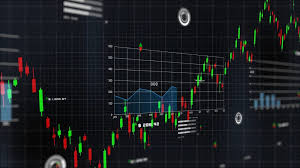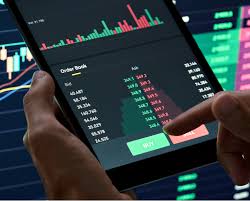Understanding Trading Crypto Indicators for Better Market Strategies

Understanding Trading Crypto Indicators for Better Market Strategies
The world of cryptocurrency trading can be exhilarating yet challenging. With the volatility that characterizes this market, traders often turn to various tools to make more informed decisions. Among these tools, trading crypto indicators play a pivotal role. These indicators provide valuable insights derived from historical data, allowing traders to analyze trends, identify potential market movements, and develop strategies accordingly. In this article, we will delve into the essential trading crypto indicators, their functionality, and how to utilize them effectively to enhance trading outcomes. For more resources on this topic, you can Trading Crypto Indicators visit website.
What Are Trading Crypto Indicators?
Trading crypto indicators are mathematical calculations based on historical price and volume data of cryptocurrencies. They help traders understand market trends by summarizing past occurrences and predicting future movements. Indicators can be categorized into two main groups:
- Leading Indicators: These indicators predict future price movements based on historical data. They can provide early signals for potential buying or selling opportunities.
- Lagging Indicators: These indicators are based on past performance and provide information after a given market movement has occurred. They typically confirm trends and help traders make informed decisions.
Popular Trading Crypto Indicators
Several trading crypto indicators are widely used by both novice and experienced traders. Let's explore some of the most popular ones:
1. Moving Averages (MA)
Moving averages are one of the most commonly used indicators and are essential in smoothing out price data. They help traders identify the direction of the trend. The two main types of moving averages are:
- Simple Moving Average (SMA): The SMA calculates the average price over a specific time frame. It is used to identify support and resistance levels.
- Exponential Moving Average (EMA): The EMA gives more weight to recent prices and reacts more quickly to price changes than the SMA, making it a favorite among day traders.
2. Relative Strength Index (RSI)
The RSI is a momentum oscillator that measures the speed and change of price movements. It ranges from 0 to 100 and is often used to identify overbought or oversold conditions in a market. Typically, an RSI above 70 indicates an overbought condition, while an RSI below 30 suggests an oversold condition.

3. Moving Average Convergence Divergence (MACD)
The MACD is a trend-following momentum indicator that shows the relationship between two moving averages of a security’s price. It consists of three components: the MACD line, the signal line, and the histogram. Traders look for crossovers between the MACD line and the signal line to identify potential buy or sell signals.
4. Bollinger Bands
Bollinger Bands consist of a middle band (SMA) and two outer bands that are standard deviations away from the SMA. This indicator helps traders identify volatility and potential price reversals. When the price touches the upper band, it may suggest an overbought condition, while touching the lower band may indicate an oversold condition.
5. Fibonacci Retracement Levels
Fibonacci retracement levels are used to identify potential reversal levels based on the Fibonacci sequence. Traders utilize these levels to determine entry and exit points. The key Fibonacci levels are 23.6%, 38.2%, 50%, 61.8%, and 100%. These levels are drawn on a price chart to help visualize potential support and resistance levels.
How to Use Trading Crypto Indicators
Understanding how to use these indicators effectively is crucial for successful trading. Here are some tips for incorporating trading crypto indicators into your trading strategy:
- Combine Indicators: Relying on a single indicator can be misleading, as each one has its strengths and weaknesses. Combining multiple indicators can provide a clearer picture of the market conditions.
- Backtesting: Before applying any trading strategy, always backtest it against historical data to ensure its effectiveness. This practice can help identify the most suitable indicators for a specific cryptocurrency.
- Stay Updated: Crypto markets are highly dynamic, and indicators may perform differently based on current market conditions. Regularly assess the performance of your chosen indicators.
- Manage Risk: Always employ risk management practices in your trading activities. Even the best indicators cannot guarantee profits, so set stop-loss orders and define your risk tolerance.
Conclusion
Trading crypto indicators are valuable tools for navigating the volatile cryptocurrency market. By understanding the various indicators and how to use them effectively, traders can enhance their decision-making processes and increase their chances of success. While no indicator can guarantee profits, the combination of technical analysis, market knowledge, and sound risk management can empower traders to make more informed decisions. Always remember to continuously educate yourself and adapt your strategies to the ever-changing crypto landscape.
